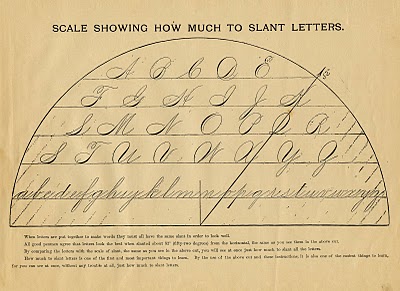- Pension Index
 |
| Harvey Scott 1868 Civil War Pension Index from Ancestry.com |
Harvey Scott. Widow Mary J. Scott. Curiously, B.E. Badger is written in the "minor" line and is listed as "Gd'n" which, according to Ancestry, the abbreviation "Gdn" means guardian. Not sure who was guardian for whom.
On an Ancestry Message Board, the abbreviation as it is listed here might mean that Badger is the guardian or decision-maker for Mary Bacon Scott.
On the lower half is some information I should be able to use later on. 1865, April 22, the Widow Mary J. Scott made an application 90531, certificate 99380.
On 1868, October 23, on the Minor line, is application 166.981, certificate 122.800 -- did Badger make another application for Mary? or what? He had three children, Marshall born 1856, Adella born 1860, and Silia born 1862.
 |
| Another Index, found on Fold3
NARA T289. Pension applications for service in the US Army
between 1861 and 1900.
|
So, I wanted to see if I could get some information using the Civil War pension application numbers. Below is some information to that effect, but I haven't accessed it yet. It is here for your perusal.
From a Rootsweb threadThe numbers are the application numbers. If you send to NARA for the pensionfile, you will use at least one of these numbers.
This page should help you out; even though, it is Pennsylvania.
This pagewill help, as well.
_genealogy_order_forms.html
This page is where you can order the forms that you will need to order records from NARA.
[UPDATE] I searched on Google and found (again) Fold3. I have a premium account there, and they've provided me with most of those documents I wanted from NARA! yay!
Widow's Application
Below is a Widow's Pension application for Mary and her three children. It looks like she made this application with the help of B.E. Badger of Concord NH. |
| Widow's Pension listing all three children found on Fold3 Approved pension applications of widows and other dependents of Civil War veterans |
No 99.380; New Hampshire; Mary J. Scott
Widow of Harvey Scott; Private, Company E, 10th Regiment NH Volunteers
Concord (NH) Agency; Rate per month -- $8 starting 31 January 1865
Additional sum of $2 per Month for each of the following children until arriving at the age of 16 years, commencing July 25 1866 wiz:
Marshall W., 10 October 1872
Adella G., 3 July 1876
Lilla E. 12 March 1878
Certificate dated 12 September 1867; Sent to B.E. Badger, Concord NH
Act 14th July 1862
Book C, Volume 9, Page 289
Claim for Widow's Pension, with Minor Children
Here is another application with more detail. The quality of the image is not very good, but it is still readable.
 |
| Another Pension application found on Fold3 Approved pension applications of widows and other dependents of Civil War veterans |
Concord
War of 1861, claim 99.380
Brief in the case of Mary J. Scott, Widow of Harvey Scott, Private, Co E, 10th NH Volunteers
Post office address Salisbury NH
Proofs Exhibited
Service -- Adjt. Genl (Adjutant General) Reports Harvey Scott musterd into Service September 14, 1862. and died in US Hospital Jany 30, 1865, of Phthisis.
Death -- Surg. Genl. Reports Harvey Scott as having died Jany 30th 1865 at Hampton Genl. Hospital, Fort Monroe, VA, of Phthisis. Lient. Tucker certifies that Harvey Scott died of Consumption got by exposure in the US Service and in the line of his duty.
Marriage -- Records shows that Harvey Scott and Mary Jane Bacon were married Jany 2, 1855
Names and dates of birth of children
- Marshall W. Scott, born Oct 11th 1856, who will be 16 years old Oct. 10th, 1872
- Adella G., born Feby 4th, 1860, who will be 16 years old Feby 5th, 1876
Proof of ages -- Affidavit of Persons present
- Lilla C, born March 13th 1862, who will be 16 years old March 12th 1878
Loyalty -- Shown
Agent and his PO address -- B.E. Badger, Concord, NH
Issue certificate for Eight dollars per month, commencing January 31st, 1865, and two dollars per month additional for each of the above-named children, commencing July 25, 1866
Signed C.M. Tompkins, Examiner; Passed September 2nd, 1867
Approved S.F.S.; I.B.M
My thoughts about this document: It looks well preserved, but I'm looking at photos of scans of photos -- you get the idea. The writer who filled this document out has wonderful handwriting, and it looks like Spencerian penmanship. You can get the similar books and improve your own handwriting!
In the proof of death, we find the connection between Phthisis and consumption, another term for pulmonary tuberculosis. Also we notice that this disease is spelled differently. We also find written down how he contracted this, and that it was in the line of duty.
We find a secondary proof of marriage date. It is secondary, in that it isn't the original marriage document, but the writer looked at and obtained the date from that primary source.
We have the exact dates of birth for each of the children. The third child I've always seen spelled as Silla. This may have been an error in deciphering Spencerian handwriting, but it is Lilla.
We find that Harvey Scott was a loyal soldier.
And, finally, we find the name B.E. Badger again. He seems to have acted as Mary Jane's liason, helping her with the government forms, endless forms. Did he act free of charge? Or did he charge a commission to help families out? Perhaps this is a subject for another search, when I run out of ideas.

 |
| Harvey Scott mini pedigree from Ancestry.com |




























